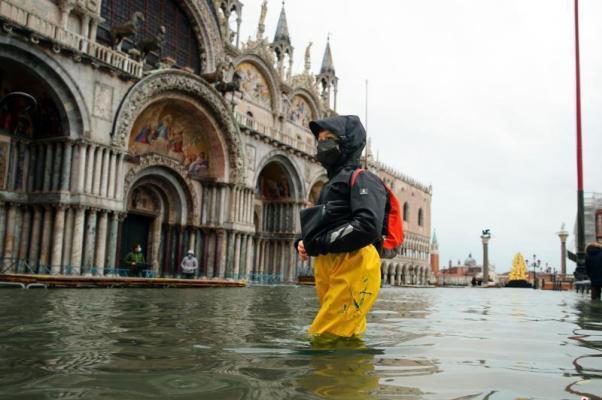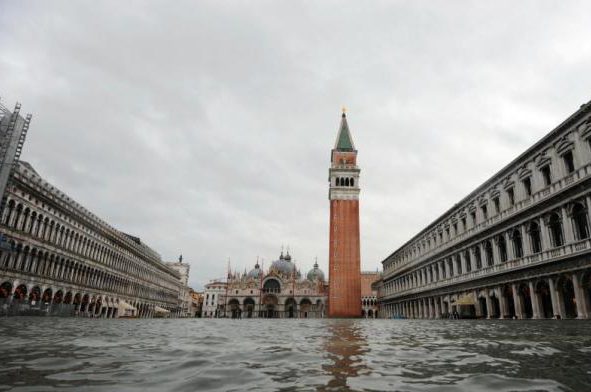December 11th – Comprehensive foreign media reported that Venice, Italy’s water capital, has been plagued by floods for a long time. The authorities began to build the “Mose” flood control sluice system (MOSE) in 2003, which began to be opened in October 2020.
However, a few days ago, due to the failure to start the flood control sluice system in time, the tide surged again, and the downtown area became a city of Zeguo.
Recently, Venice, Italy, was flooded and flooded many parts of the city. It is reported that the flood was caused by stronger winds raising the water level, and the “Moses” system that prevented Venice from being hit by the flood did not work. The picture shows the flooding of St. Mark’s Square.
It is reported that in the past two months, the “Moshe” floodgate system has been successfully activated many times to protect the local flood. Unexpectedly, in recent days, Venice experienced strong winds and heavy rains, tides surged, rivers flooded, and the municipal government failed to start the lifting gates in time, causing heavy water to flood again and the downtown area to become a Zeguo.
The famous landmark St. Mark’s Square and the surrounding arcade shops and streets were flooded. Pedestrians put on water shoes and waterproof trousers. The staff quickly set up a temporary walkway, and some stores tried to pump away the water in the store.

According to Reuters, the “Moses” flood control project was designed in 1984 and began construction in 2003, but it has been plagued by delays and cost overruns. The system was tested in July 2020 and first launched in October.
The “Moshe” flood control sluice system can protect the city from tides up to 3 meters, but 48 hours of warning is required for the rise of the gate. Weather forecasts for the past few days believe that the tide will not rise to the “gateway” height required to start the sluice, so there is no need to start the sluice, so downtown Venice has been flooded.
Venice Mayor Luigi Brugnaro called for accelerated start-up and response of the “Moses” system in the face of a sudden change in weather.



